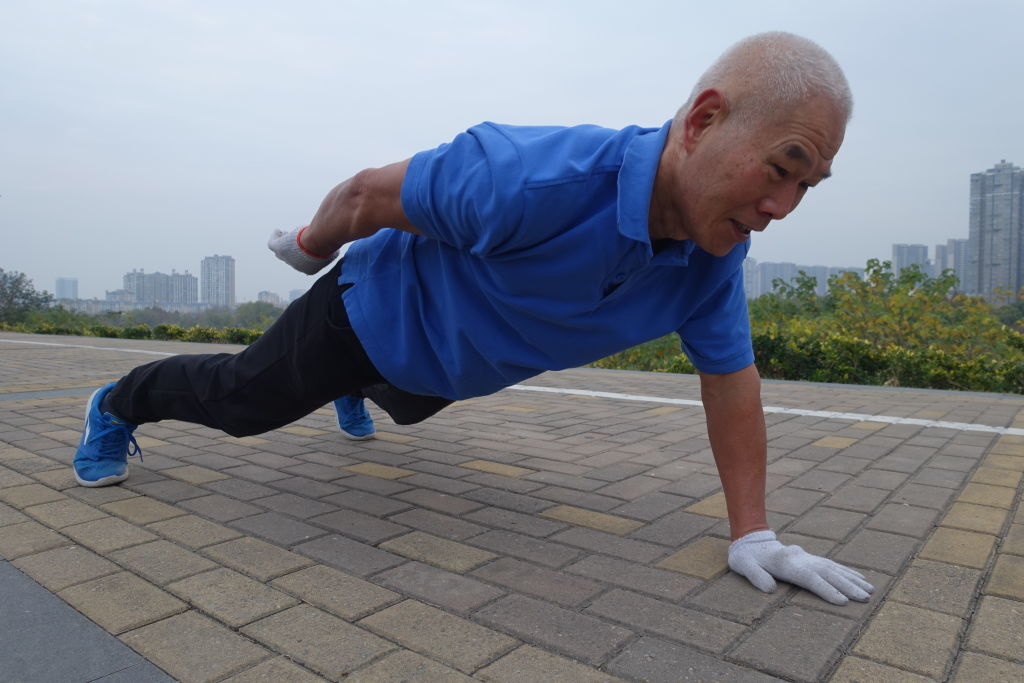Why Are We Still Doing Crunches?

Myths take a long time to die, if they ever do.
Two centuries ago, French neurophysiologist Pierre Flourens removed slices of brain tissue from a variety of animals, including pigeons and frogs. From his studies he concluded in 1824 that humans only use ten percent of our total brainpower. While this has been definitively proven false, the allure (and misinformation) remains. The mysticism surrounding potentially tapping into a mysterious neurological treasure trove is too seductive to abandon.
As goes our brain, so goes our body. I’ve taught at Equinox Fitness for a dozen years. In that time I’ve many seen ridiculous trends and movements masquerading as fitness. One favorite is standing on seated abductor/adductor machines, butt swung out while pressing open the knee pads with a ridiculous overarch in the lower spine, a certain pathway to chronic injury.
I won’t even mention what I’ve witnessed on treadmills.
And then there’s the sit-up (as well as the modified crunch) which is perhaps the longest-standing myth of health and physique. In some ways it makes sense: this thing we call ‘exercise’ is a relatively new phenomenon. For most of history our ancestors moved as part of their daily existence. Relegating movement to something we do for a concentrated hour or two a few times a week is still in its early phases—and, to be honest, will hopefully disappear if we’re able to better integrate movement into our lives, not just at the gym. There was bound to be a lot of trial and error. The crunch is an error.
Yet it persists. I can understand why: it burns, and people often confuse working out with burning. Ripping through a hundred sit-ups feels like it does something. In fact it does: it greatly increases your chance of a back injury.
Health experts at Harvard University are pushing for smarter core conditioning, including my favorite, planks. The difference is one of functional training: you want to exercise in ways that mimic how you regularly move through the world. In a plank you retain proper alignment: ears above shoulders above hips above ankles, with various muscular engagements driving the conditioning.
In both sit-ups and crunches you’re exacerbating already poor postural habits. If you’re driving or sitting at a desk (or worse, both) all day, your hips flexors are already shortened and tight. While doing a sit-up, the natural curve in your back is being flattened as you drive your chin forward and down, the same terrible pattern we do every time we stare at the phone in our hand. The combination of these actions tug on the muscles of the lower spine, resulting in spinal flexion. From there, chronic pain and injury is near.
To try it out yourself, mimic the posture of a plank while standing. Notice how you can achieve shoulder, core, and quadriceps engagement without losing a thing; in fact, your standing posture will feel stronger.
Now mimic the position of a crunch, and ask yourself when you’d ever need to be in such a position, save if you were ever being punched in the stomach. Even then, planks would have better conditioned you to withstand the impact.
Even the Navy is calling for an overhaul for solider conditioning. From an editorial in the Navy Times:
It’s well past time…to deep-six the sit-up, an outdated exercise today viewed as a key cause of lower back injuries. Experts say there are better measures of core strength that have the added advantage of being less prone to cheating. The plank, for example, more accurately measures core strength and because it’s done by holding the body arrow straight while resting only on the toes and forearms it does not subject muscles to strain by motion.
We’re conditioning our core in most exercises, if we’re doing them correctly. Spot core conditioning is not nearly as effective as range-of-motion and strength training, in which abdominal muscles are being utilized within the context of a full-body movement or static hold. A plank, for example—I prefer planking on my hands, but for those with wrist or shoulder problems, forearm planks are wonderful—works your arm and wrist strength, shoulder stability, legs, and mental focus. Some of my favorite other options for integrating core work into larger movement patterns include TRX, VIPR, and kettlebells.
As exercise science evolves, we need to let go of movements that do more damage than good. It is true that some fitness routines might be fine for some and toxic for others. At this point, however, everyone can safely remove the crunch from their regimen and not lose a thing. In fact, one of the best things to do to promote the growth of brain-derived neurotrophic factor (BDNF) is constantly changing up your workouts. Forget crunching and open yourself to an entire range of better core condition and stabilization exercises.
Hopefully the myth of the crunch will soon perish. In the world of fitness, where trends and hot new workouts by ‘experts’ offer the illusion but not necessarily the intelligence or integrity of movement science, we need to be educated about the long-term arc of living a healthy lifestyle, and not only buy into what appears to work in the short-term. Most importantly, we need to give up our illusions when the curtain is pulled open.
Fortunately for fitness fanatics, eleven-dollar bottles of detoxifying juice, each containing thirty-five grams of sugar, offers quick and perfect nourishment, right?
—
Image: Chip Somodevilla / Getty Images
Derek Beres is a Los-Angeles based author, music producer, and yoga/fitness instructor at Equinox Fitness. Stay in touch @derekberes.





